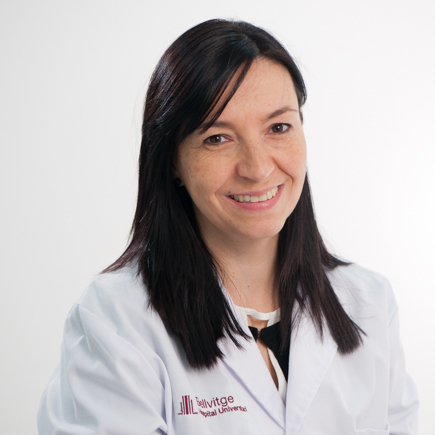
Better processes for better care
CASE STUDY – This Barcelona hospital began its journey with ambitious projects and is starting to see the fruits of its labor, with the pandemic acting as an unexpected but powerful catalyst for change.
Words: Ana Alvarez Soto, Director of Processes, Hospital de Bellvitge – Barcelona
At the Hospital de Bellvitge, we have always taken great pride in our work. We consider ourselves a great hospital, which is why striving to improve the quality of care is part of our people’s DNA.
We are a very large organization, with 745 beds and 4,473 employees. In 2019, we performed more than 450,000 outpatient consultations and more than 20,200 major surgeries (surgical activity represents around half of our work). As you can imagine, the scale of our organization means there is a lot of complexity we need to deal with on a daily basis. This problem was exacerbated by our tendency to treat activities that span many departments as sub-processes rather than opportunities to increase collaboration among areas and find better ways of interacting.
Aware of this struggle, our management team have been encouraging the hospital to move towards a process-based system. There are, of course, different methodologies that could help us with that, but we eventually decided to introduce Lean Thinking. I came to Bellvitge from Mútua Terrassa University Hospital (also located near Barcelona), where we had been implementing lean for a while and achieved spectacular results. I had experienced the transformational power of lean first-hand and seen how quickly and dramatically processes could be turned around, which made me a passionate advocate and ultimately helped me to convince our management team to move in that direction.
One of the first challenges we encountered after our lean journey began was finding a person who could read quality data and tie them to the every-day care and bring together the hospital’s overall strategy, results and operations. In the end, I was asked to do it and I became the Process Manager for the organization. More importantly, it was decided that our department would sit between the CEO and other department heads – both physicians and nurses – to really reinforce the idea that this could only work as a cross-departmental, cross-functional effort.
To deeper my understanding of the methodology, I attended the Lean Practitioner Program offered by the Instituto Lean Management, where I met Antonio Olmos, an engineer, who ended up joining us. Together, we initiated a few pilot projects in different parts of the hospital (which earned me the nickname “pilot girl”). Before long, our improvement team were also joined by a nurse, Rosa Sanchez, we had identified as a potential change agent and more recently, in February 2020, by Francisco Cortes – also an engineer. Our efforts to improve first focused on processes in which we had detected big quality issues or in which we were struggling to get results, but we also provided support and guidance to those front-line staff who came asking for help.
To teach our people about Lean Thinking, we began to offer a four-hour workshop on the foundations of lean and A3 problem solving. (We are starting a new one on Kata soon.)
THE FIRST PROJECTS
At the beginning, getting people on board was not easy, which probably had to do with the nature and scope of our first project. Its focus was on the surgery macro-process and it involved all kinds of roles – from surgeons to anesthesiologists, nurses to assistants. Our goal was to fix the department before moving to the new surgical wing (which opened last year). It was a good project, but it was really big. Too big, perhaps. People were divided: on the one hand, you had those who saw it as a worthwhile undertaking, on the other those who used the fact that it would take time to see results as an excuse to say that it simply wouldn’t work. Eventually, the results spoke for themselves.
We began with a value stream map to see what problems we should prioritize. This exercise revealed opportunities to improve the efficiency of operating rooms and to better coordinate to avoid having to reschedule procedures and missing slots for surgeries. Following the budget cuts imposed on the public healthcare system a few years before, we were at that point experiencing the worst waiting list in Catalonia. Our goal was to eliminate it, by increasing our activity while implementing a “shock plan” promoted by CatSalut (the Catalan healthcare authority) to streamline the schedule of procedures. So, we optimized time and use of resources in our operating rooms and standardized as much as we could to make the work easier for nurses and ensure different activities took place at the right time.
The results were good. We managed to reduce the time it takes to prepare patients for their operations from 73 to 30 minutes, increase our percentage of on-time patients from 28 to 58.5% and cut the number of rescheduled procedures significantly. (At the same time, the shock plan helped us to reduce the waiting list.) Patients now go to the area earlier and we have a better system to schedule the work, which no longer happens at the last minute. We also ensure better resource sharing by coordinating more effectively among areas. For major procedures that still belong to the outpatient category, we have introduced a pull system for porters: rather than being assigned to only one operating room at a time, they are now assigned to the whole unit and carry whatever patient is ready. For this, standardization was key: our Job Instructions sheets have been very useful in decreasing the time it takes for patients to get to surgery. We have also introduced an automated tracking system for the surgical process that notifies family members as their loved one moves through the process (entered OR, exited OR, in the room) – a great example of the fantastic work of our IT Department. Visual management in the surgical department is our next goal: until now, introducing boards was impractical because the department was spread across three floors. When the move to the new location is complete, we believe it will become easier.
Another area in which it was hard to introduce lean was the Emergency Department. This is the face of the hospital and one of its most complex areas, in which at first people struggled to see the opportunity afforded by lean. The main problem here was a lack of space: whenever beds for patients with more serious medical conditions are not available, those patients typically stay in the ED, waiting. As a result, of the 40 visiting rooms we have in the Emergency Department, 25-30 were often taken up by hospitalized patients in need of a bed, with very little space available for the actual emergency work. In the midst of this chaos, we started to see the potential for some safety issues, with urgent patients coming in un-triaged and without wristbands to identify them. This was not the right way to work.
We started a number of A3s in Emergency to get the hospitalized patients to their wards as quickly as possible. We ran several experiments. One of them was the improvement of an existing board in a bid to provide workers with better information on the evolution of the situation in the department. Another issue was the poor communication among Admission and Triage, largely caused by the constraints of our physical space, resulting in long lines and waiting times. We started by analyzing the work of different functions over the course of 24 hours – porters, doctors, triage, ER, etc – and immediately saw huge amounts of waste, duplicate tasks and confusion. We then did a pilot project to try a different way of admitting patients, to hopefully eliminate the many bottlenecks we were experiencing: with the new system, the patient is triaged as soon as she is admitted, eliminating any wait in between. Sadly, Covid-19 won’t allow us to continue with this system and forces us to find an alternative.
The results we achieved in the initial projects helped us to win people over and spread lean across the Hospital de Bellvitge, as did the fact that we rely heavily on cross-functional teams in our improvement work. As a consequence, we now have many projects taking place in different areas of the hospital.
In the following video, we hear from two of my colleagues. Pere Cardona discusses the work his team has been doing to improve the patient journey and experience and the consequences it’s had on the way we manage beds in the Neurology department. Rubén Genovés tells us about the work that’s been done in ambulatory care with 5S and process optimization.
Another driver for lean projects in the organization is our collaboration with pharmaceutical companies and other suppliers of ours who are also engaged in Lean Thinking and offer to share their technology or resources with us. For example, they provide us with engineers to help in the improvement of processes in which they have an interest, like in the case of the process engineer we have been offered to help improve our Cardiology Department. This form of sponsorship is helping us to introduce lean in new areas, even though they wouldn’t normally be our next area of focus.
Our Lean Day has also been a tremendous way to share lean knowledge across the organization through the presentation of the A3s of our projects. (The use of the A3 as a communication tool is pretty much interiorized at the hospital, but we still have to help our people see the power of using it as a way to document their problem-solving activities. Even though we use the structure to attack a problem, we don’t always put it down on paper.)
As it often happens with Lean Thinking, the more you learn, the less you feel you know. So, I recently enrolled in the Lean Professional Program to understand how to better connect our improvement work with the hospital’s strategy. Our current strategic plan is somewhat hard to translate into concrete actions people across the organization can take to contribute to the achievement of our objectives, and we are hoping that hoshin kanri will help us to get there. To help us unlock the secrets of this practice, we are in constant contact with other lean hospitals in the area – many of which have become great examples of lean healthcare organizations over the years – and with the Instituto Lean Management. Covid-permitting, we are hoping our next strategic plan will be designed and deployed using the hoshin approach.
THE CRISIS AS CATALYST
The culture at Hospital de Bellvitge is clearly changing, as people start to realize what Lean Thinking can do for them. It’s wonderful to see more and more of them coming to know on our door, asking us to help them bring lean improvement to their areas.
In many ways, I think the Covid-19 pandemic has been something of an opportunity for us. The results we were able to achieve in the first few days of the emergency, in part thanks to our increasingly lean culture and way of working, have done a lot to help people understand the importance of change.
When the emergency started, we were able to transform the flow of patients into our Emergency Departments from one day to the next (the space is now completely adaptable and changes in real time in line with the number of Covid patients who need to be admitted) and to triage and test patients in just seven minutes to determine the seriousness of their condition and therefore decide where they should go next. This showed people there was no reason to fear the changes we had been struggling to introduce for so long, and that anything is possible. We are proud to say that our ER never collapsed.
Visual management and standardization also played a key role, helping nurses who were stepping into an ICU for the first time to successfully work in a new environment and under very stressful circumstances.
Another thing we did when the pandemic first began was to quickly establish protocols with nearby small hospitals that had no ICU and agreed with them on the number of patients that they could send to us. Collaboration with other healthcare organizations had historically been difficult, but with Covid-19 it happened overnight.
This crisis has taught us to be more flexible and open to change. It was a powerful catalyst for change, in fact, cementing lean’s role as the tool we rely upon to turn our sense of urgency (which is evidently stronger today, in the middle of the pandemic, than ever before) into better processes.
THE AUTHOR

Read more


FEATURE – We often spend a great deal of time and effort trying to fit our organizations into a box instead of building a box that fits our organization, says Sharon Visser.


FEATURE – The author describes Lean Thinking as a path of discovery and explains why attempts to define it “once and for all” are destined to fail.


FEATURE - Whether an organization pursues a lean transformation often depends on the early financial results - the low hanging fruit - it's able to achieve. This article offers a model to meet business needs while ensuring a transformation lasts.


INTERVIEW - On April 18th, Lean Global Network and KD Consulting will hold a not-to-be-missed event in Ho Chi Minh City for the Vietnamese lean community. In this Q&A, Tony and Khoa tell us what to expect from the summit.

